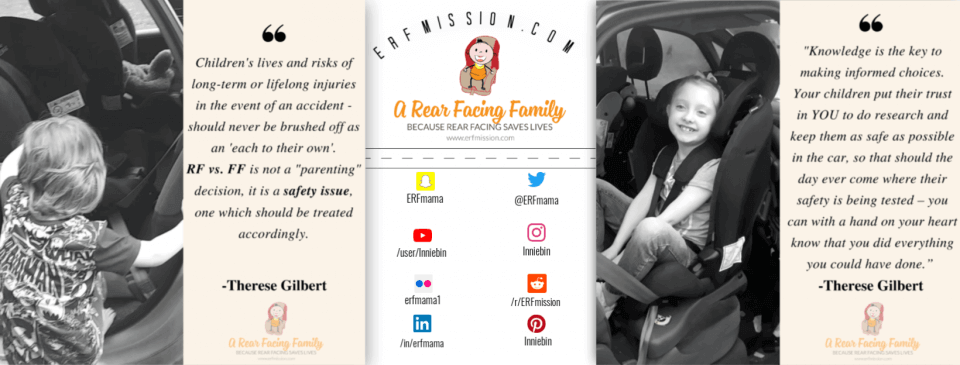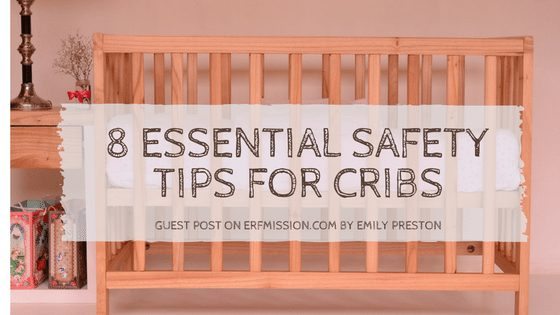
I recommend reading 8 Essential Safety Tips for Cribs by @emilypreston555 ! #baby #safety #cribsafety #bedroom Share on X
Infant crib safety is just as important as car safety for your baby. Your child spends more time in his or her crib than anywhere else, which means that it is important to make sure that the crib is a haven of safety for your little one. Unsafe cribs have been implicated in an increased risk of SIDS, or sudden infant death syndrome. Babies under the age of 12 months are at the highest risk of SIDS, which can happen to any baby at any time. Creating a safe crib environment can help protect your child from injuries and lower his or her risk of SIDS.
1. Have Your Baby Sleep on His or Her Back
Remember, “back to sleep.” Babies should be placed on their backs every time you put them into the crib. This position is the safest one for your child.
2. Keep the Crib as Bare as Possible
Although thick quilts, stuffed animals and pillows are cute, they should never go into the crib with your baby. These items increase your child’s risk of SIDS and suffocation. Furthermore, the American Academy of Pediatrics (AAP) and the Canadian Pediatric Society both urge parents to avoid using crib bumpers due to the risk of suffocation and strangulation. Bear in mind that dangling mobiles should be removed from the crib by the time your baby is 5 months old or sooner if your baby is able to sit up.
3. Maintain a Safe Environment
An overall safe bedroom is also important for your baby. Keep the crib at an arm’s length away from windows, doors, dressers, or any other item that the baby can pull into the crib. Cords from electronics, lamps and blinds should also be at least 2 feet away from the crib to avoid strangulation. Place the crib away from air vents, space heaters, humidifiers and windows that could create drafts. Your home should be a smoke-free and safe environment.
4. Avoid Loose Sheets and Blankets
Use one fitted crib sheet with strong elastic on your baby’s mattress. Skip the blankets. Instead of blankets, put your baby in an infant sleep sack that does not have any drawstrings.
5. Use a Firm, Tight-Fitting Mattress
A tight-fitting mattress protects your baby from getting trapped between the crib’s sides and the mattress. You should not be able to fit more than two of your fingers between the crib’s sides and the mattress. If you can, you need a different crib mattress.
6. Avoid Using Older Cribs
While it might be tempting to use a vintage or hand-me-down crib, this is not one area in which to save money. Over the years, cribs become worn. Their hardware may become loose. Repeated assembling and disassembling increases the chances that the crib’s support system, screws and bolts could become weakened. Old cribs may also have broken or cracked slats. Cribs made before 1980 could also contain dangerous lead paint, which causes serious health effects if it is ingested.
7. Avoid Cribs with Decorations and Wider Slats
Decorative cutouts in the crib’s headboard or foot board can be pretty, but they may also be dangerous. Avoid any decorations that could break off and cause your baby to choke. Cutouts in headboards and foot boards could also cause your baby to become entrapped. The slats on the sides of the cribs should not be more than 2 3/8 inches apart (about the width of a soda can). This is to stop your baby from getting his or her head stuck in the slats. The corners of the crib should be the same height as the headboard and foot board to stop your baby’s clothing from getting caught.
8. Do Not Use Drop-side Cribs
From 2000 to 2010, the Consumer Product Safety Commission received 32 reports of babies and toddlers being suffocated from drop-side cribs. More than 11 million of these cribs have been recalled by their manufacturers since 2007. The recalls were issued because faulty installations or worn hardware could cause the sides to unexpectedly fall and suffocate the baby.
Your baby may spend 10 or more hours per day in his or her crib. Once your child is 35 inches tall (90 cm), move him or her to a regular bed. A safe crib, much like a safe car seat, is critical to your baby’s well-being.
![]()
Emily Preston is a stay-at-home mum of a three-year-old human hurricane, freelance writer, cat lover, fitness junkie, and a huge fan of nature and eco-living. You can follow her via Twitter @emilypreston555
![]()
Blog owner notes: If you are looking for even more tips on baby-proofing – why not have a look at this article; ‘101 Ultimate Tips & Guide to Babyproofing Your Home’?
Therese has completed the ‘Advanced Child Car Seat Training Course’ at TRL (Transport Research Lab) and is a CPD accredited car seat expert. She blogs about in-car safety, car seats, tips, reviews, giveaways and advice. She’s a mum on a mission to change the law and raise awareness. She is also a breastfeeding advocate and gentle parenting promoter who loves cloth nappies, baby-wearing, BLW and co-sleeping/bed-sharing.

